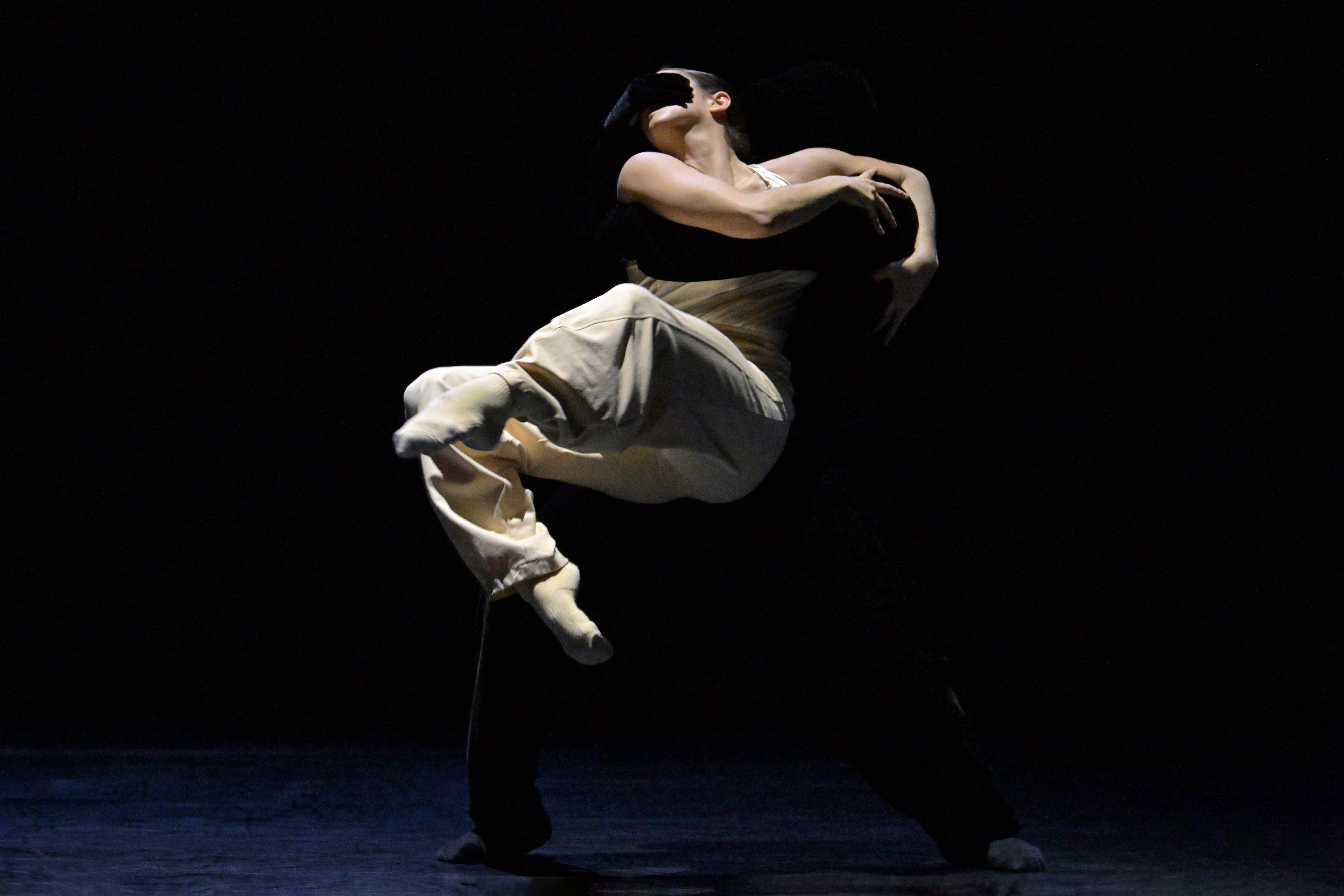
The first night of Ballet BC’s 2024/25 season opener, DAWN, was a sold out affair, and rightly so. On the bill are three unique works by choreographers, Crystal Pite, Pierre Pontvianne, and Imre and Marne van Opstal, that bend the boundaries of ballet and take the sensibilities of contemporary dance to another realm. Each piece is as different as can be from the next. Together they give us experiences that are perpendicular to one another. They explore vastly differing themes and moods, and provide antagonistic visuals, patterns, and colour schemes. Ballet BC has always been good at curating avant garde pieces and juxtaposing them to make bold statements. The pieces they choose often appear stylistically different but connect with each other on a core level, so that at the end of the night you always walk away with the feeling of having seen a very cohesive show. That is very much true of DAWN.
It isn’t customary to begin a review of a show with a discussion of its third act, but when the act in question is a Crystal Pite creation, you are left with little choice. So let’s start there. And let me just say, wow. “ ‘Frontier’,” Pite has said is about the unknown, specifically in the context of the universe, and that of consciousness. “Creation for me is about venturing into unknown territory and being in a generative relationship with doubt.”
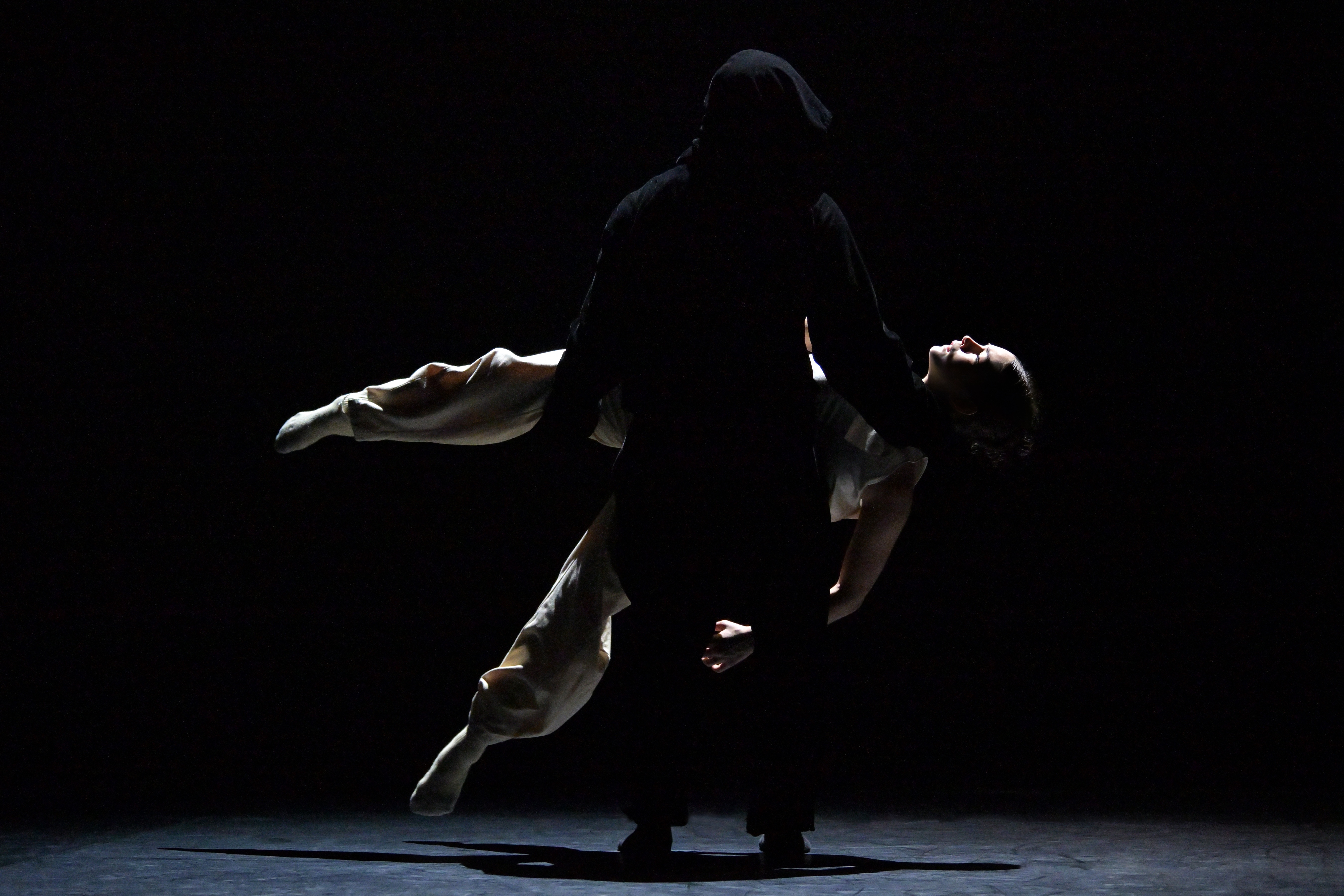
The piece begins with dancers approaching the stage. Their footsteps are intentionally audible. They then take a seat in the front row, shrouded in complete darkness. As the curtain rises, the stage is lit by a dim blue light. The dancers pull themselves onto the stage and crawl about on it. They are dressed in black, with black hoods and face coverings. Dancers in white emerge from the back of the stage and perform contemporary solos to choral music in pools of light reminiscent of cathedral chambers. The dancers in black swarm the dancers in white, at times curbing and controlling the movements of the dancers in white, and at other times they seem to be helping the dancers in white reach further, stand taller, and expand their dances. The hooded figures are mysterious, they move in unison, shuffle across the stage with a hushed softness. They represent perhaps consciousness, its limiting and expansive nature, or the universe itself. The hooded figures sometimes represent fear, and sometimes self-doubt, as they slow the dancers in white down and confuse them. But sometimes they bring the dancers in white joy. This push and pull is thoughtful. The confusion that results from it is realistic and takes the exploration of the topic of human potential and self-sabotage to a profound level. It is this grey area that interests Pite.
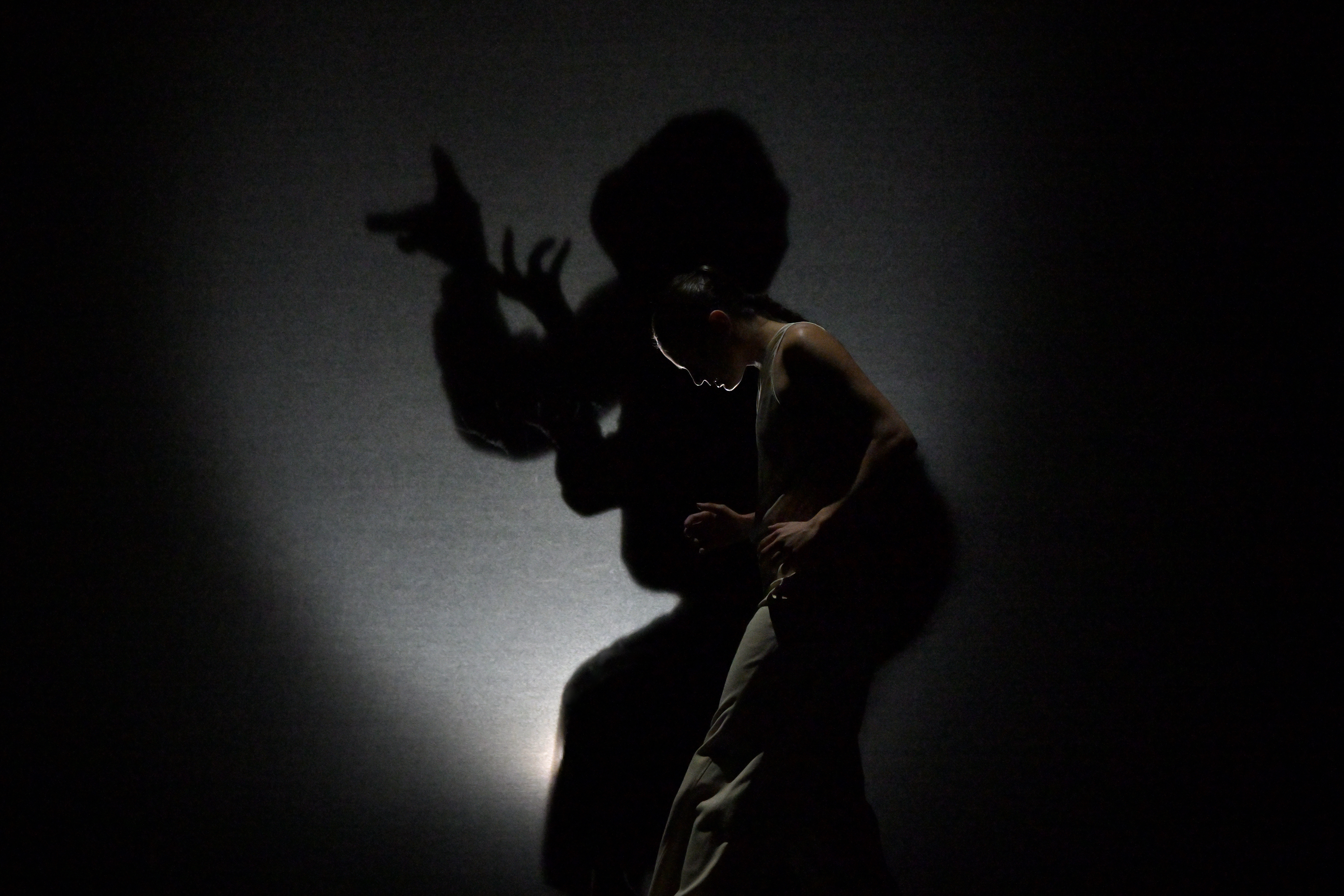
The piece is long and meaty. The choreography is contemporary and modern. Pite allows her dancers to lean into their individual strengths and with this freedom they excel, giving us their whole hearts on the stage. There are elements of hip-hop and jazz in the piece, but all the movements manage to appear new, so new that they defy genre. The music and lighting are pivotal in mood setting and in framing the dark figures against the light ones, thereby highlighting their symbiotic relationship.
The mood of this piece is eerie and spooky, very Halloween appropriate. Pite recreates the fear of failure and self-doubt in a very experiential form for the audience to engage with. The use of light and darkness, and playing with music that oscillates between hair-raising choir music and abstract ambient sounds, scares the viewer but in the most satisfying and delicious way. It feels like we are in the recesses of the minds of the dancers, and by doing so we are able to dive into the recesses of our own minds. How Pite achieves this is a mystery. She is at the top of her game. She communicates complex philosophical discussions fully and beautifully through her dancers, with all the necessary nuances. She never misses the mark. Each movement is a message delivered and understood without words. Watching “Frontier” moved me. It is clever and subtle. I felt transformed as I engaged with the tragedy and beauty of the human mind, the one that sabotages us but also leads us to greatness. Pite brought the best out of her dancers. So much so, that I wondered if it was a whole new set of dancers I was watching, which of course was not true because we had already seen many of them in the other two works.
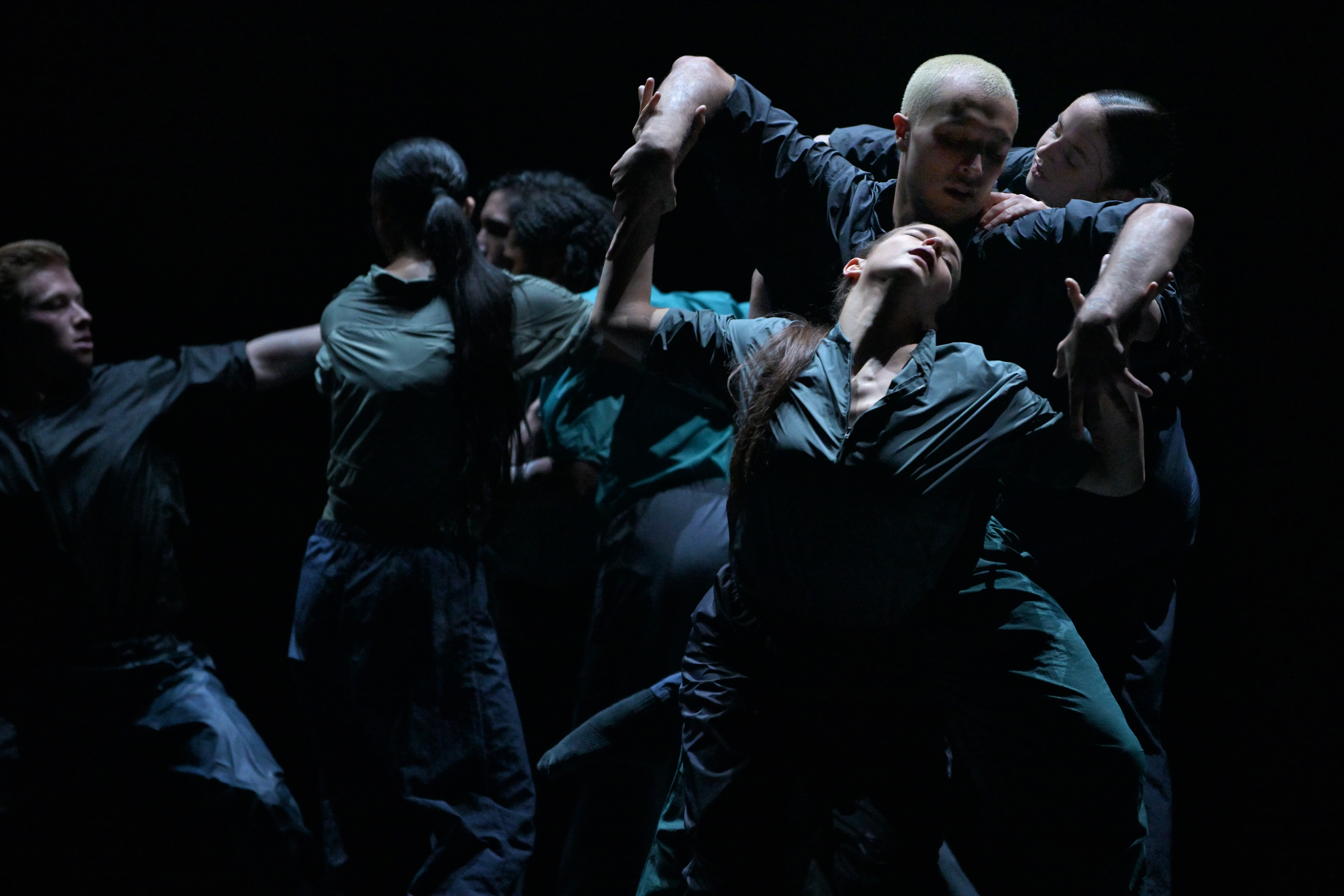
Jumping to the middle, French choreographer, Pierre Pontvianne brings us a new work, “Cloud Poem,” for which he has also created the music. It begins by spotlighting solos with dancers in dress shirts and trousers standing in blue light. The solos transform into intricate group choreography that is dynamic and very visually appealing. The dancers move across the stage like the tentacles of a large animal. Within the larger groups, smaller groups move to their own choreography, but since everyone remains close together, the effect is that of controlled chaos. The music too recreates this chaos as it is a reproduction of winds, storms, and rain. The overall effect being that of clouds in the sky. Pontvianne has created a piece that feels very natural and earthy. Paired with the other two pieces, it provides a softness and elegance to the evening that is welcome and soothing. The piece is a breath of fresh air. It contemplates our ties to the earth and to each other.
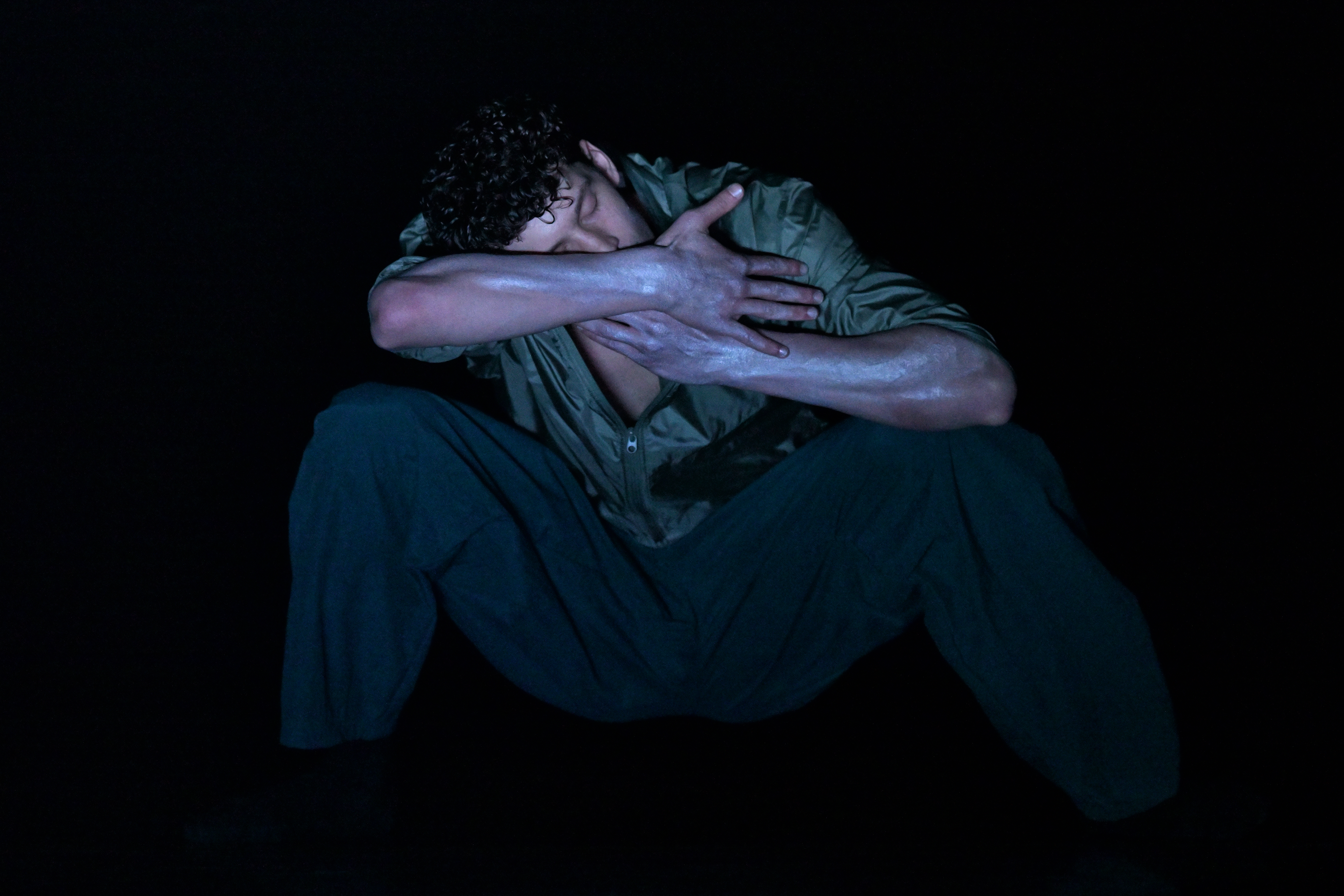
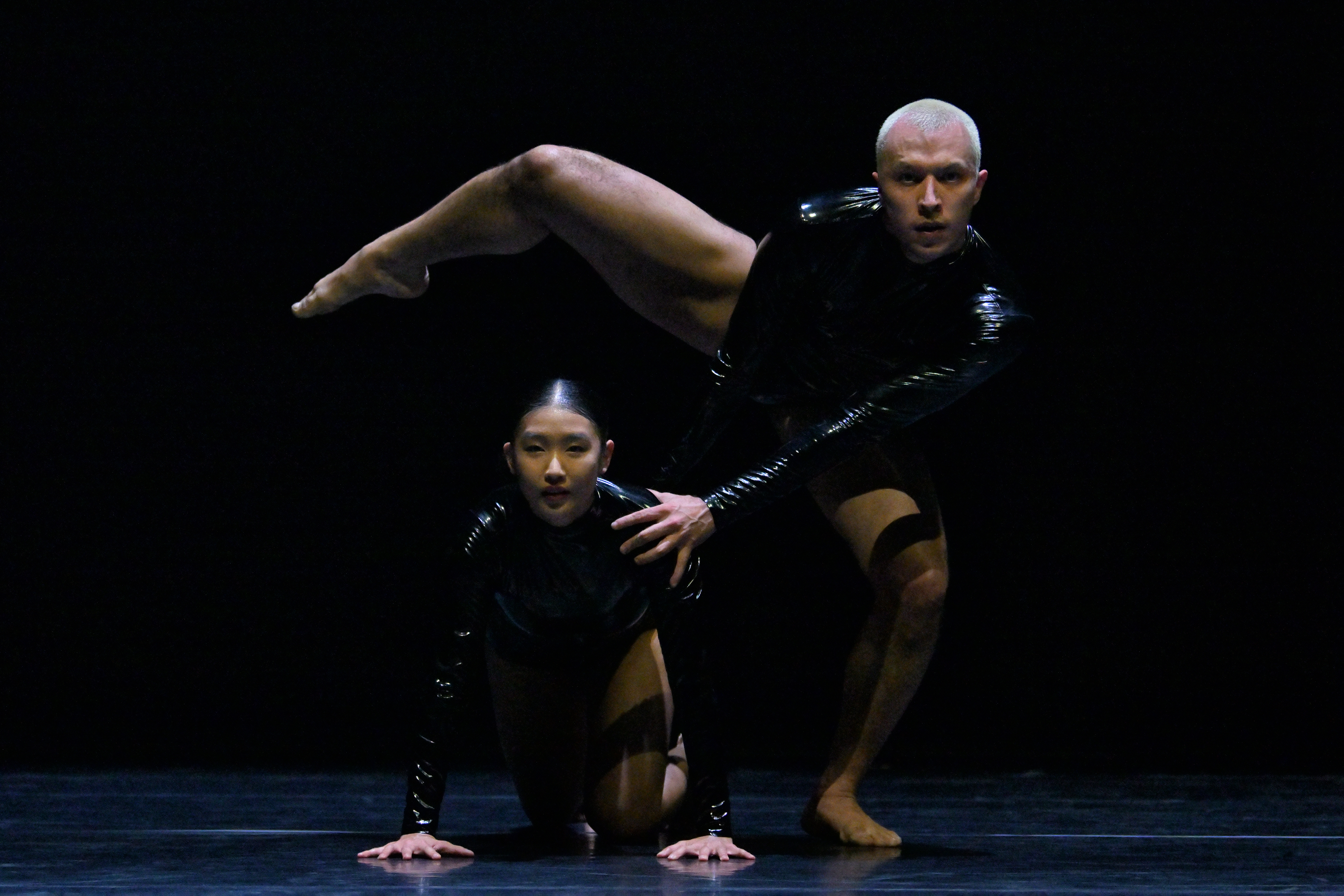
Finishing off with the very beginning: in “Heart Drive”, Dutch choreographic duo Imre and Marne van Opstal take us on a journey of sexuality. Dancers open the show dressed in latex bodysuits and moving with sharp and hard hitting sureness. They look mechanical and animalistic in the beginning as they learn about sex. There is a lot of humour here, especially in the exaggerated pelvic thrusts. We see dancers engaging in sex as a sport or even as a bodily function. They explore sex alone and then together as a collective when they dance in a circle. This experimentation slowly transitions into using sex as a way to find love and true intimacy. From sex dungeons we move to the privacy of a monogamous bedroom. I saw “Heart Drive” at Ballet BC previously. I was blown away by it then and it was just as good this time. I did notice that they had updated it quite a bit and of course, new dancers always bring something new to the performance. But it was just as humorous, ironic, and profound as it was the last time. I loved this piece.
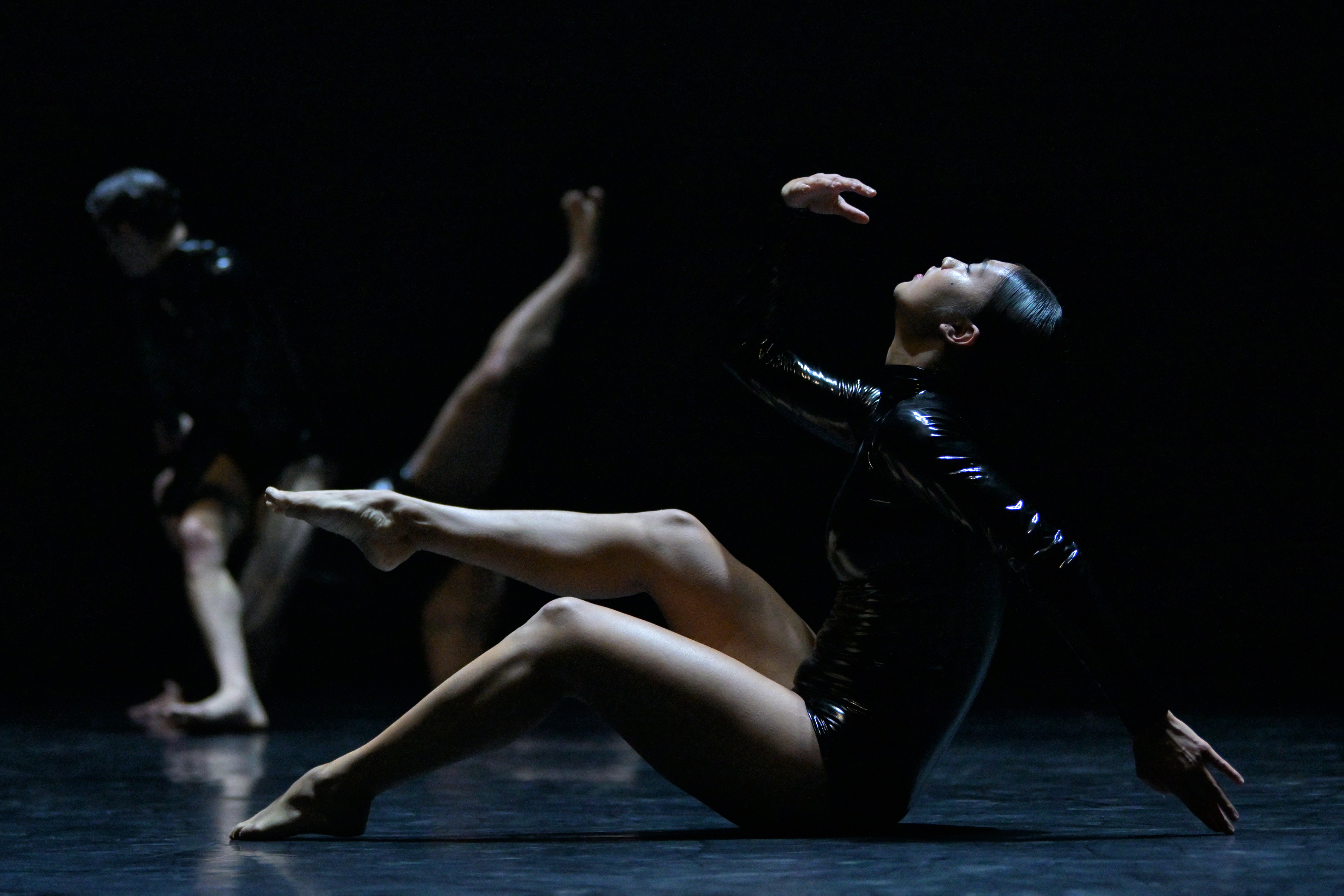
All in all, DAWN is a fabulous collection of dance works. You must see it if you want to be inspired, step out of your comfort zone, and question ideas that we take for granted or as second nature.
Get your tickets here.
– Prachi Kamble
